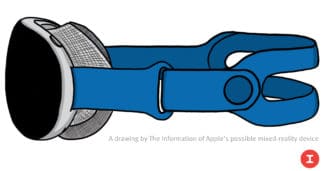Apple has postponed the launch of its AR/VR headset yet again, Bloomberg’s Mark Gurman reports.
The introduction was apparently originally planned for April, but should now happen at the annual WWDC conference in June. It should then go on sale later this year, Gurman writes, matching what prominent supply chain analyst Ming-Chi Kuo claimed in December.
Kuo’s December note blamed the delay on unspecified “software-related issues”. Gurman describes the problem as “issues with sensors on the device to enable the hand and eye control mechanism”. Three weeks ago Gurman described the headset using a combination of eyetracking and finger pinching as its primary control mechanism, alongside Siri voice commands.
This is just the newest of many reported delays. In 2019 The Information reported Apple planned to ship a headset in 2022, as did Gurman in 2020 and Kuo in 2021. But come January 2022 Gurman reported this had been delayed to 2023 due to “challenges related to overheating, cameras and software”.
Last year The Information published an investigative report detailing the headset’s troubled development and changing form factor. The report outlined an evolution from a thin-client paired with a wireless console to a fully standalone device covered with sensors and an external display showing the wearer’s eyes. It also suggested Apple’s project suffered from “overengineering, too-complicated solutions that often result from poor planning”.

In August an Apple-linked company filed to trademark ‘Reality One’, ‘Reality Pro’, and ‘Reality Processor’, suggesting the headset and its processor will be branded Apple Reality. Gurman previously reported Apple is working on a VR client for FaceTime with face tracking for driving avatars, a VR version of Maps, spatial versions of Notes and Calendar, the ability to view a Mac’s display in-headset, and AR/VR tools for developers.
The Information and Gurman have previously reported the product will be priced around $3000. Kuo claimed it will weigh noticeably less than current VR headsets and feature high resolution OLED microdisplays, while The Information has claimed it will be powered by the M2 chip seen in the latest MacBooks and feature hand tracking, eye tracking, face tracking, leg tracking and iris scanning for logins and payments. So if the reports so far are to be believed, Apple’s product will have higher resolution, a more powerful processor, more features, and a slimmer design than Meta’s Quest Pro – though at a higher price. And given Meta reportedly plans a successor for 2024, Apple’s headset might spend more of its lifecycle competing against Quest Pro 2, which might feature OLED microdisplays and a new chip too.





